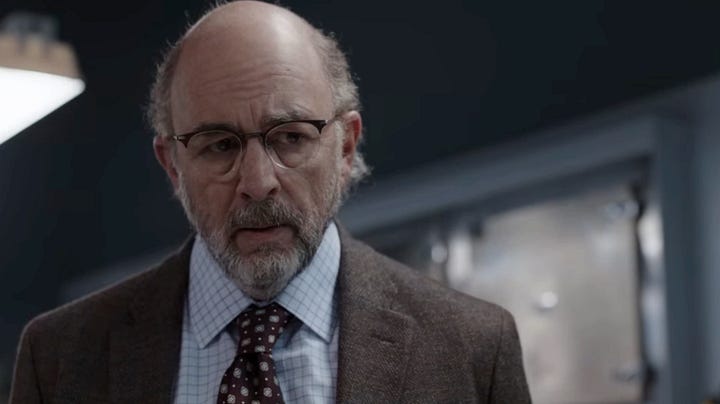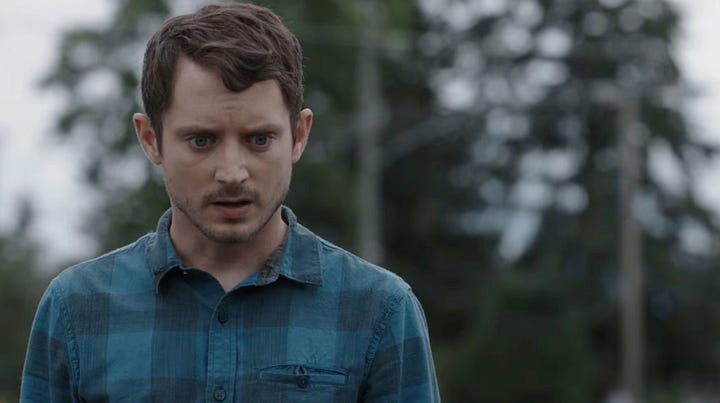Making Narrative Exposition Painless: DIRK GENTLY'S HOLISTIC DETECTIVE AGENCY
Piling On Jokes Through Cuts
Dirk Gently’s Holistic Detective Agency has a lot to do in its first few episodes: introduce its characters; establish its style; explain the parameters of its weird world (it is a fantasy); deliver jokes (it is mean to be a comedy); lay out the facts of its mystery (it is, well, a mystery); tell us the audience which character(s) knows what about the world *and* the mystery; all without so much verbal explanation that it feels like an exposition dump.
This sequence from Episode 1.02 “Lost and Found” does all of the above, making special use of clever editing and blocking/framing.
Setup
Detectives Estevez (Neil Brown Jr.) and Zimmerfield (Richard Schiff) are examining a body found inside a high-rise hotel room, determined to have been killed by . . . a hammerhead shark.
I’ve talked at length here about how this J-Cut works, both to transition us from one scene to the other, and give us narration telling us what all the characters know or are trying to discover about this plot aspect.
So let’s look at how the joke works, and what the two scenes tell us separately and together.
Payoff
When we see a low-angle shot of Todd Brotzman (Elijah Wood) looking down and talking to someone off-screen, broad film knowledge means we expect to soon see who he's talking to — especially as we heard a voice which is NOT his in the J-Cut which led us into this scene.
But the cut to a wide shot places a bush between us and the subject of Todd’s attention / the other voice.
This both extends the mystery, and makes for a visual punch line.
The Joke
The next shot is actually a double payoff; it answers our question, and delivers a visual joke; even though from hearing his voice we may have expected to see him, the reveal of his crouching behind the bush wearing a tie and bright jacket is funny.
It’s not only a joke, though; we glean something about Todd (similar to the detectives, he knows nothing about the weirder elements of this world or case; he’s not going to blindly follow Dirk lead because he’s outside of the bush) and Dirk (he knows a lot; he’s willing — in fact happy — to look ridiculous).
The Narrative Function
Both scenes give us some information about the four main characters, and when put together like this also invites us to directly compare and contrast the duos of Estevez & Zimmerfield and Dirk & Todd.
We learn what what the characters know (or don’t), which is key as all of them are trying to solve the same mystery.
We hear and very importantly see the respective duos’ relationships to each other as they demonstrate their knowledge, methods, and relationships.


Writing the Visuals
The decision to cut this way may come as late as the edit, but such direct connections as this are often set earlier whether with shotlisting or script.
In particular, if a joke starts in one scene and continues over the slugline, it’s most likely set up in the writing phase. The script for “Lost and Found” shows this:
Clearly it was always meant to be a direct call and response, but the director and/or editor decided the J-Cut would be more effective and funny.
Takeaways
Every transition between scenes is an opportunity; for a joke, to shortcut certain bits of exposition, and to compare and contrast characters, locations, etc.
Consider what tool(s) are best to leverage these opportunities, and consider it as early as possible because (as the piece on J-Cuts notes details more specifically) everything from timing to framing is also key, and is ideally taken into consideration when shotlisting and on set.




